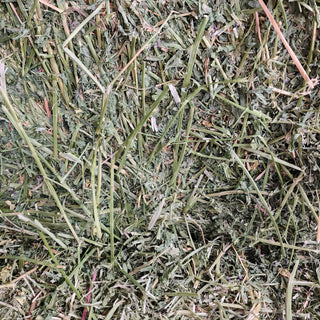Mold is a type of fungus that can grow on a variety of feeds, including hay. Mold often grows on hay due to high humidity, damp storage conditions, or other environmental factors. Moldy hay can look different depending on the type of mold present, appearing as a white, gray, or black powdery substance on the surface of the hay.
Moldy hay can be a serious problem for horses because it can contain mycotoxins, which are toxic compounds produced by certain types of mold. Symptoms of mycotoxin poisoning in horses can include digestive problems, such as colic and diarrhea, as well as respiratory problems, such as coughing and nasal discharge. In severe cases, mycotoxin poisoning can lead to liver and kidney damage, and even death.
For this reason, it's important to always inspect hay for mold before feeding it to horses. If you find moldy hay, it should be discarded and not fed to horses. If you are in doubt about the quality of your hay, you can have it tested for mycotoxins by a laboratory.
Preventing mold from infesting your hay is all about humidity and heat management. Stack your hay loosely on stacks to allow for maximum air flow between bales under cover. Hay should be stored in a dry, well-ventilated area to reduce the risk of mold growth. Preventing mold from forming during the hay making process is done by drying the hay after cutting and storing it up on pallets which allow air to circulate and stop the accumulation of moisture. The faster hay is dried and the drier it is kept affects the rate of growth of the mold: the drier the hay, the less chance there is for mold.
That said, there is no such thing as mold free hay. All hay has some mold present. With horses that are sensitive or allergic to mold, steaming or soaking the hay just prior to feeding is the best way to limit mold intake. Steaming kills the mold spores with heat, and the moisture causes the spores to swell and stick to the stalks and leaves. Soaking is moisture without heat, so it does not kill the mold, but does stick the spores to the stems and leaves.

